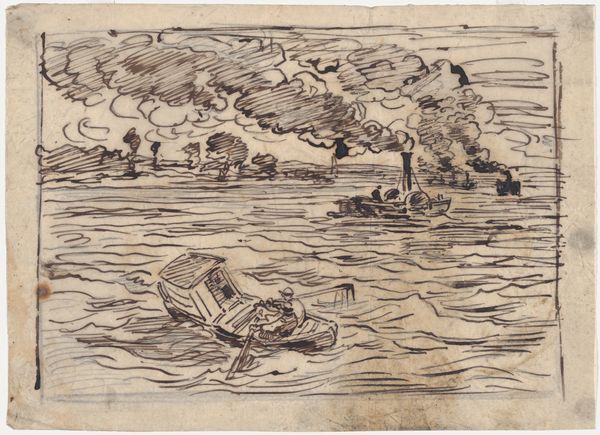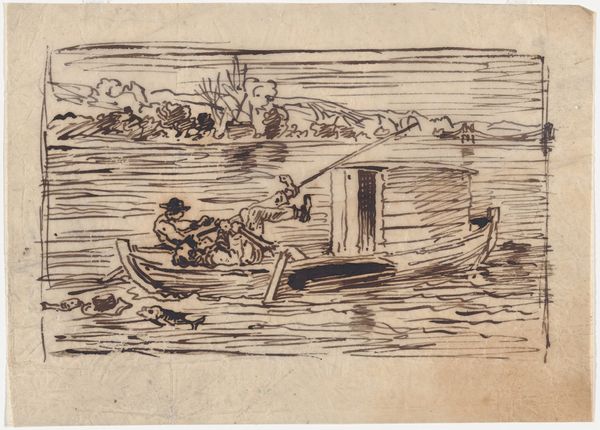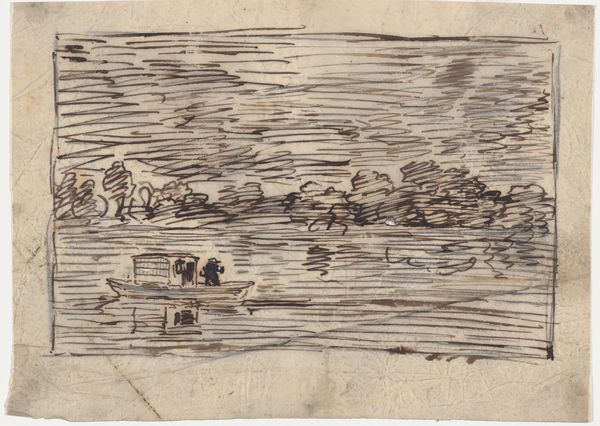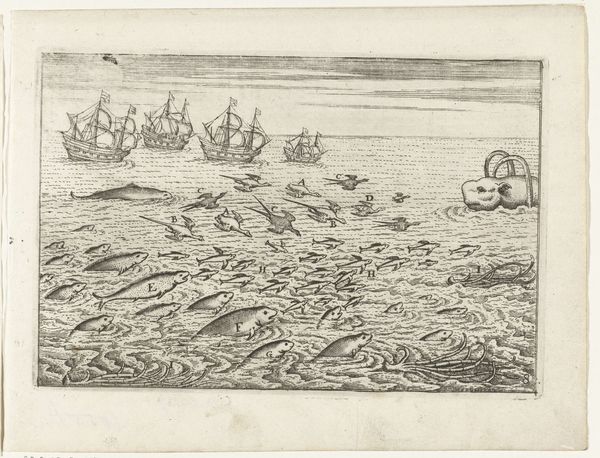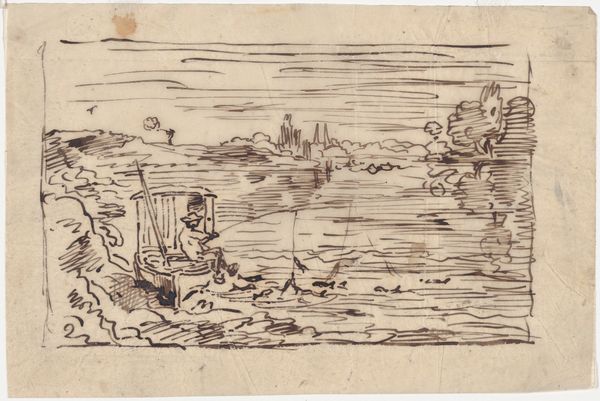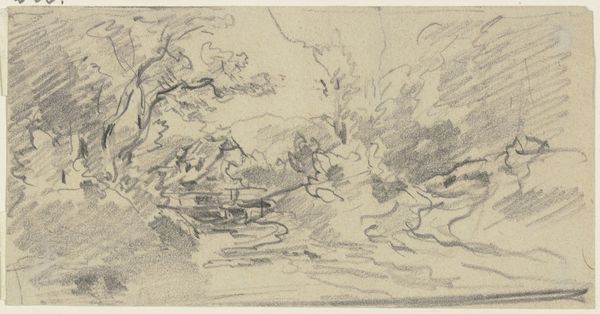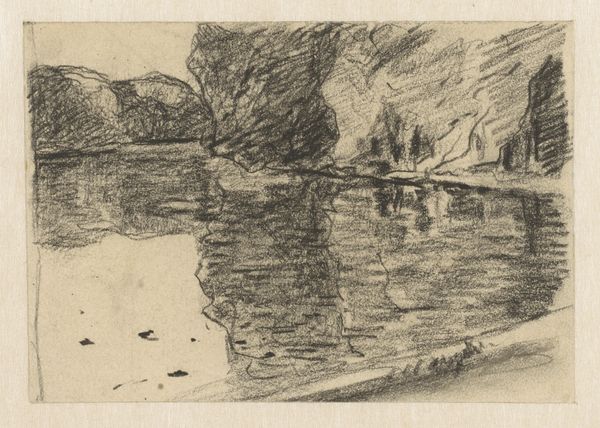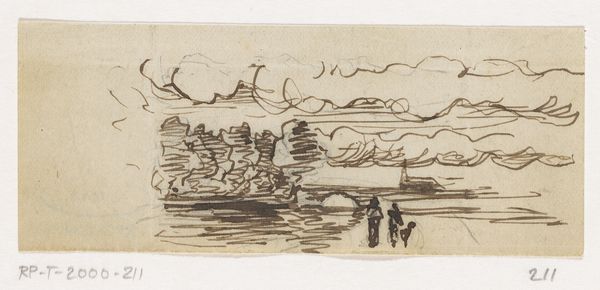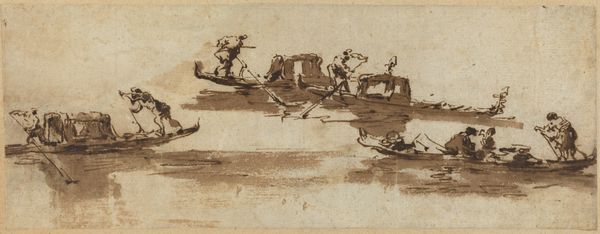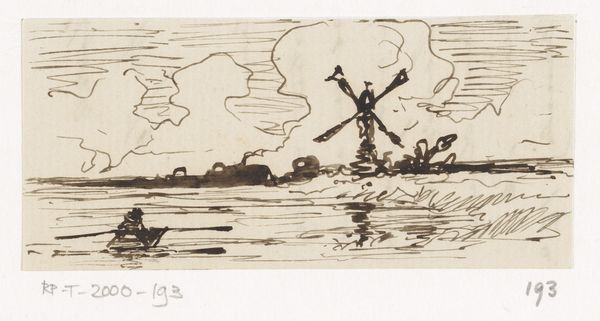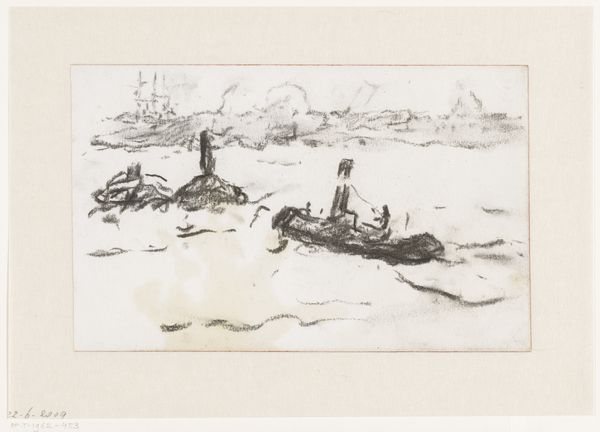
Rejoicing of the Fish at the Departure of the Cabin boy 1862
0:00
0:00
drawing, print, ink, pen
#
drawing
#
ink drawing
#
pen drawing
# print
#
landscape
#
ink
#
pen
Dimensions: Sheet: 4 7/16 × 7 7/8 in. (11.3 × 20 cm)
Copyright: Public Domain
Curator: This whimsical drawing is titled "Rejoicing of the Fish at the Departure of the Cabin boy" created by Charles François Daubigny around 1862. It’s an ink drawing using pen on paper, currently held at the Metropolitan Museum of Art. Editor: It’s an odd little scene, isn't it? The initial impact is of playful chaos, a visual frenzy rendered in very spare, linear strokes. The frantic energy of the fish really pops. Curator: It does capture a certain energy! Daubigny was deeply engaged with the Barbizon School, a group of artists who prioritized painting en plein air—outdoors—and capturing the French countryside. Editor: I see that sensibility. Even though it's a drawing and not a painting, there's a raw, almost impulsive quality to the linework that speaks to capturing a fleeting moment. Curator: Absolutely, and it’s worth considering the context. Daubigny lived through periods of intense social and industrial change in France. The arrival and departure of boats was extremely symbolic in that moment. Editor: Which would explain the somewhat awkwardly rendered steamboats in the background? Interesting how Daubigny uses very simple horizontal lines to define the water, then populates it with this wild explosion of celebratory fish. Curator: Precisely! It speaks to anxieties and the artist's perspective regarding environmental changes, maybe. There’s also the matter of that departed cabin boy; perhaps he polluted these waters, or simply took food away. It is difficult to tell, but one has to consider the possibility of criticism. Editor: It’s a delightfully ambiguous, almost allegorical scene. The joy is evident, and I wonder what symbolism Daubigny attached to fish? Curator: The fish have, across art history, signified different meanings: from prosperity, rebirth, fertility… To imagine Daubigny assigning all of this in one drawing might be a reach, but a multiplicity of interpretation might have been the intention here. Editor: An intriguing proposition. For me, the joy is immediate while the social context opens layers of potential meaning, shifting the initial simplicity into something far richer and evocative. Curator: Exactly. Viewing it, in its time, probably had the ability to bring so much awareness. Today, it continues to pose different yet essential questions to viewers.
Comments
No comments
Be the first to comment and join the conversation on the ultimate creative platform.
